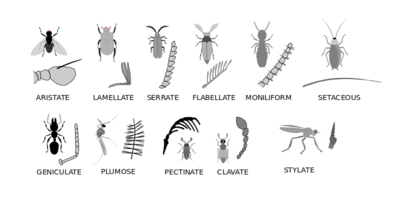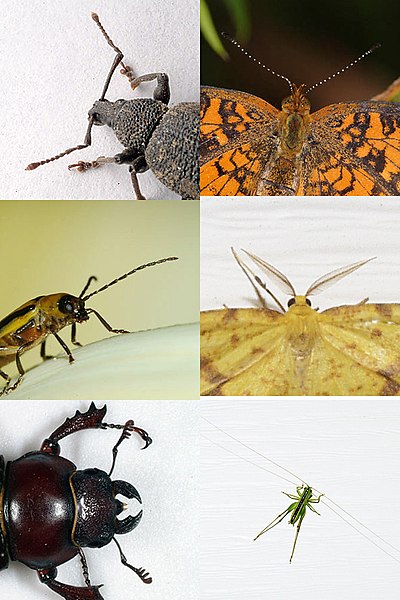Antennae
Antennae (singular: antenna), (Hebrew: אַנטֶנָה, ahn-teh-nah) are paired appendages used for sensing in arthropods.
Insects
Insects, belonging to the hexapod class of the phylum arthropoda, are characterized, among other things, by having a pair of antennae.[1] Antennae, varying greatly in size and form act as tactile organs, olfactory organs, and in some cases as auditory organs.[2] The three basic segments of the typical insect antenna are the scape or scapus (base), the pedicel or pedicellus (stem), and the flagellum, which is often made up of many units known as flagellomers.
Crustaceans
Crustaceans are the only arthropods with two pairs of antennae.[2] The pair attached to the first segment of the head are called primary antennae or antennules, which have generally been considered homologous to the antennas of other mandibular classes.[3] The pair attached to the second segment are called secondary antennae or just antennae.
References
- ↑ Tenney, Merrill C (1967). Pictorial Bible Dictionary. Grand Rapids, Michigan: Zondervan. p. 375. ISBN 0-310-23560-X.
- ↑ 2.0 2.1 Hickman Jr, Cleveland P.; Roberts, Larry S.; Keen, Susan L.; Larson, Allan; l'Anson, Helen; Eisenhour, David J. (2008). Integrated Principles of Zoology (14th ed.). Boston: McGraw-Hill. ISBN 978-0-07-297004-3.
- ↑ Barnes, Robert D. (1974). Zoologia de los Invertebrados (3rd ed.). Mexico: Interamericana. p. 493. ISBN 968-25-0094-X.


